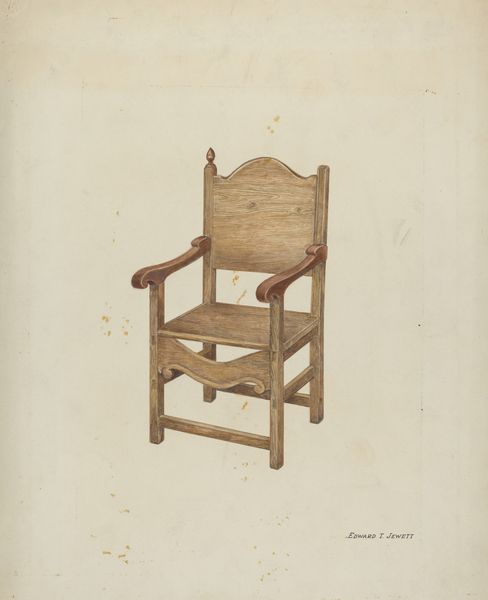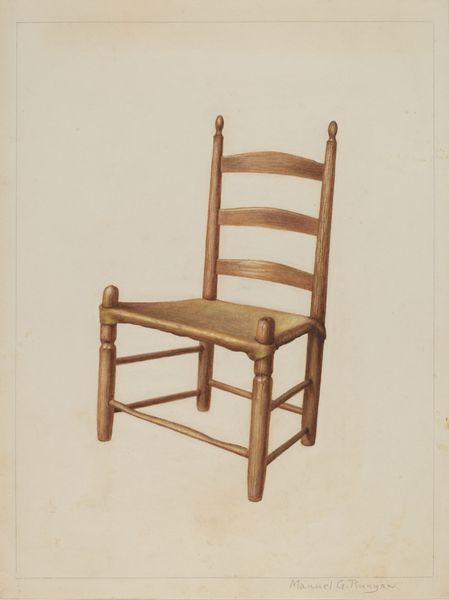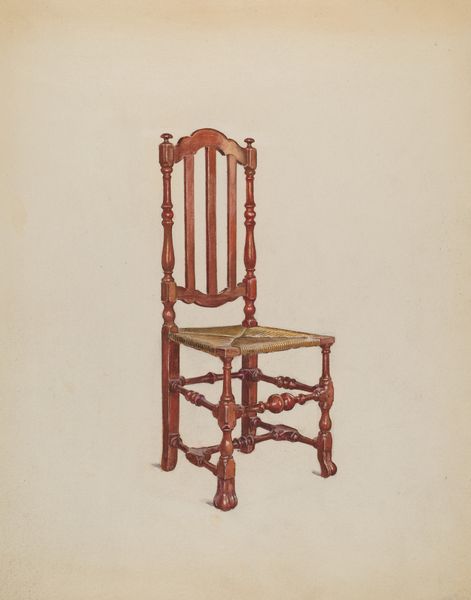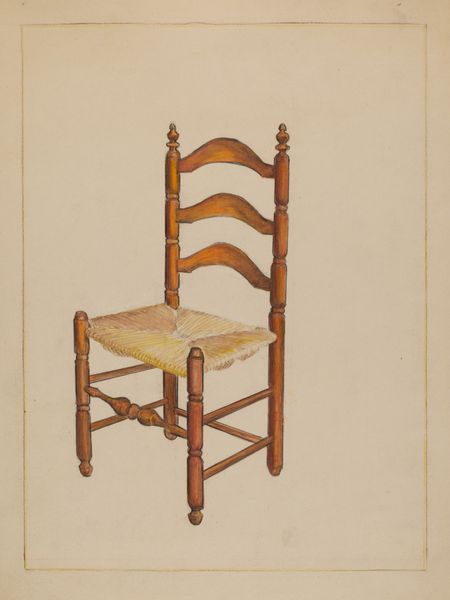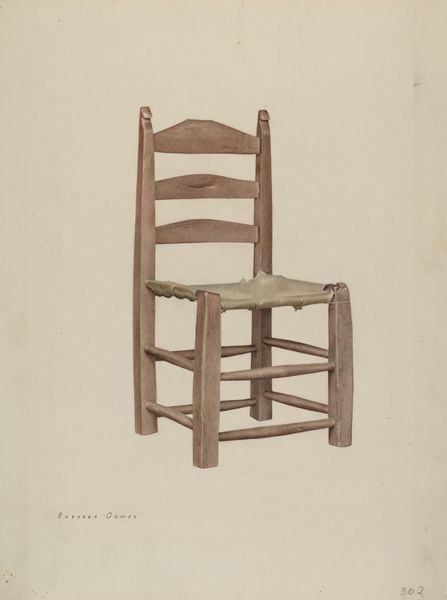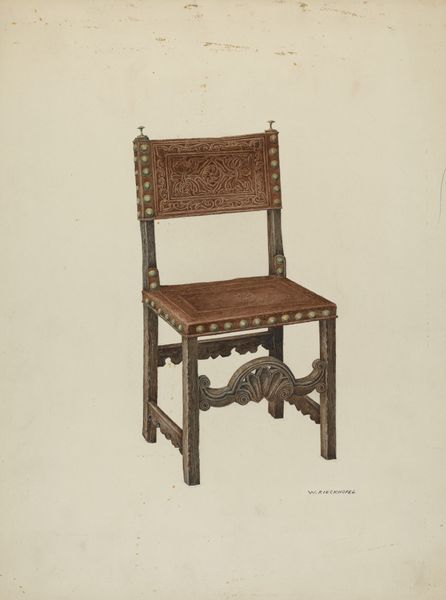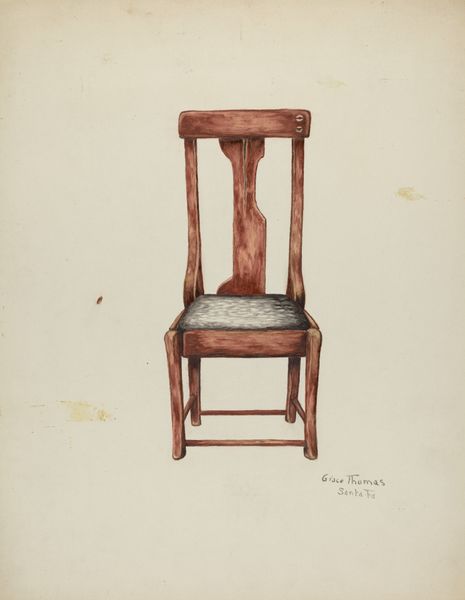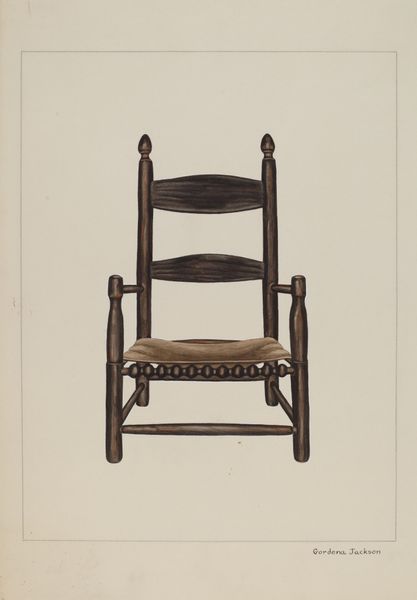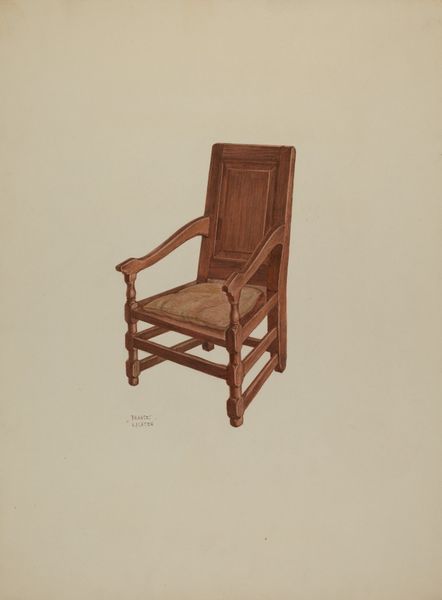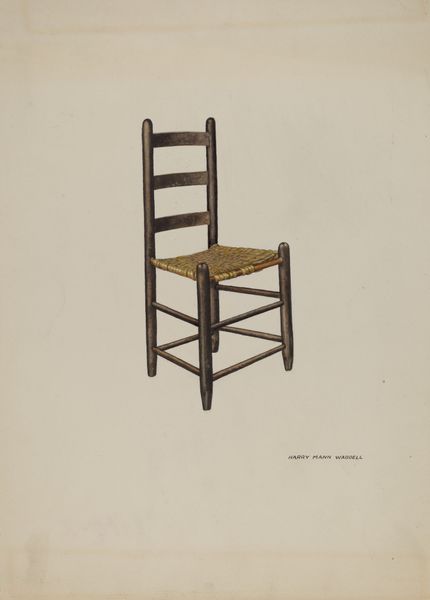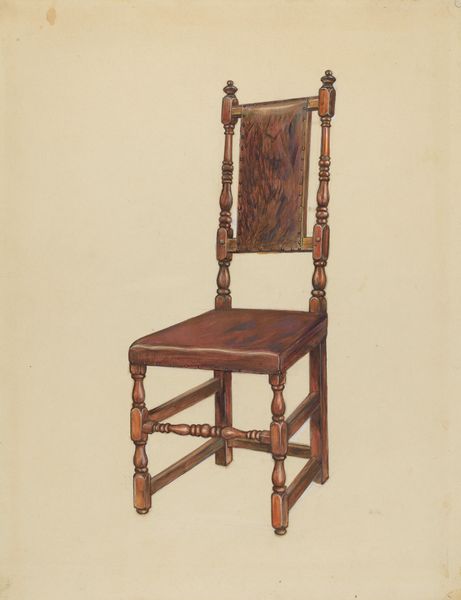
drawing, watercolor, pencil
#
drawing
#
charcoal drawing
#
watercolor
#
pencil
#
watercolour illustration
#
academic-art
#
watercolor
Dimensions: overall: 30.7 x 22.9 cm (12 1/16 x 9 in.)
Copyright: National Gallery of Art: CC0 1.0
Curator: This charming rendering is a watercolor, pencil, and charcoal drawing from around 1938. Charlotte Angus created this depiction of a "Pa. German Arm Chair." Editor: Immediately, I notice how…sturdy it looks. Solid. It feels very much of a particular place and time, almost a monument to rural life. Curator: Right. These Pennsylvania German, or "Dutch," armchairs were important furnishings. The craftsmanship reflected cultural identity and resourcefulness born out of available materials. This drawing highlights details like joinery and wood grain—labor and functionality, wouldn't you say? Editor: Absolutely, and beyond. The seemingly straightforward presentation speaks volumes about cultural continuity and preservation during a time of massive social and economic change. These aren't simply objects but imbued with collective memory and, potentially, resistance to homogenizing forces. Who used this chair, and what role did it have in domestic and communal life? Was it a patriarchal seat, or did it welcome people of all identities? Curator: That’s where I find this specific rendering intriguing, in it's seeming disconnect. We see craft rendered via artistic mediums—the "high" and the "low" rubbing against each other. Why preserve this particular armchair through representation? What values does the rendering, itself, embody about the labor required in its representation? Editor: Yes, let’s delve into that. Angus’s rendering is careful, almost reverential. But let’s not mistake that detailed attention for passive observation. This meticulous process hints at something else—the artistic act itself as a form of witnessing and valuing, a deliberate intervention within a particular cultural landscape threatened by erasure or commodification. The chair becomes a stage for considering cultural tensions. Curator: That’s astute. Considering that shift from tangible object to artistic rendering gives me much to think about in relation to this chair. Editor: Indeed. It's not just a chair. It becomes a question of what, how, and why we preserve elements of the past.
Comments
No comments
Be the first to comment and join the conversation on the ultimate creative platform.
